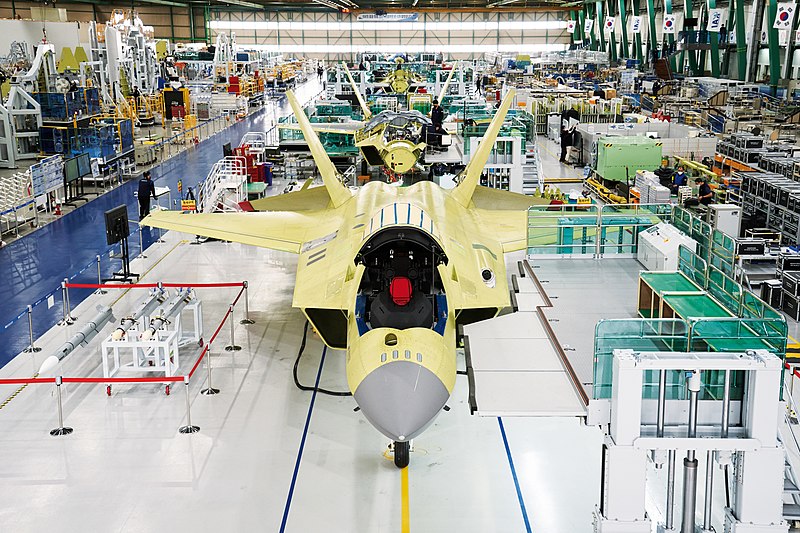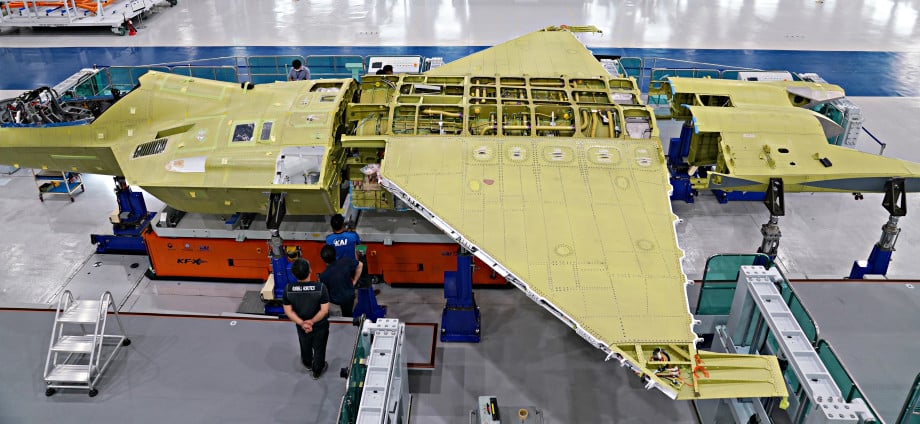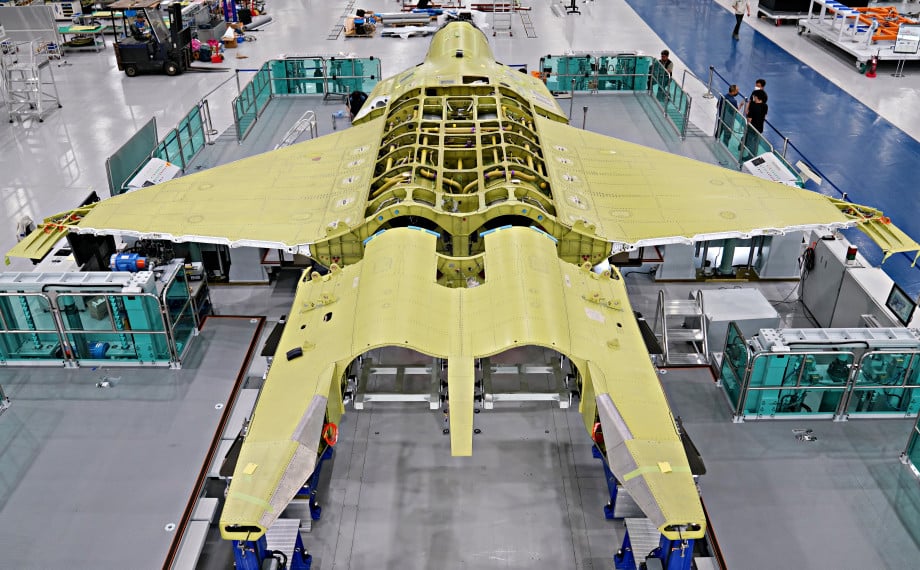Aviation
Top 8 facts about South Korean KF 21 Fighter jet: Specification, Partnerships, Weapons, and capacity
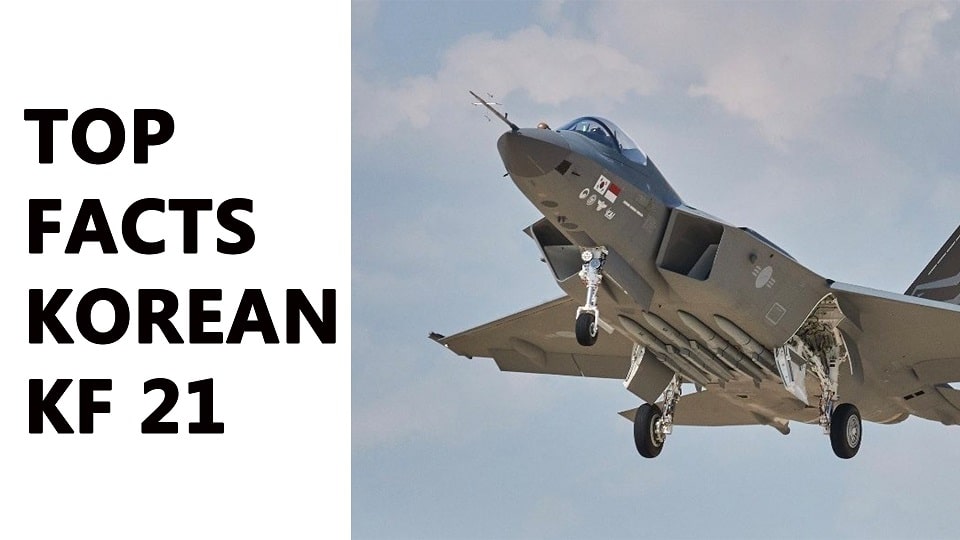
1. It took its first maiden flight in July 2022.
The Korean Aerospace Industries built the air superiority fighter KF 21 Bormae with Indonesia’s assistance. Its airframe is more stealthy than any fourth-generation fighter, but unlike fifth-generation fighters, it does not carry weapons through an internal bay.
It made its first flight from the production facility on July 19, 2022. The Korean name Bormae translates to “young Hawk” in English. At least 40 aircraft are expected to be delivered by 2028, according to the report. but it will also be offered on the international market.
2.It is a 4.5 Generation fighter jet.
To replace the outdated F4 and F5 fighter fleet, an alternative fighter is being developed for the Republic of Korea’s air force. It is a multirole fighter jet of the 4.5 generation, the source said. Initially, South Korea sought to develop a fighter aircraft that could outperform the Typhoon and Dassault Rafale.
Technically speaking, though, it necessitated extensive study and creation. They nevertheless made an effort to design a plane that would compete with the F16 Fighting Falcon in terms of combat range, a 34% longer airframe, and better weaponry.
3.Indonesia is a partener for KF 21 progrm.
Most nations cooperate in the program to lessen the burden of the financial aspects because it takes proper investments to develop any technology. In KF X, Indonesia joined the regional program in 2010 as per a committee agreement for 20% ownership. Later, however, KAI claimed that it had not made the agreed-upon payments. Later, an agreement was reached between Indonesia and South Korea to create a new cost-sharing plan by 2022.
4. KF 21 backed by Lockheed martin
The KF-21 program is supported by American titan Lockheed Martin, which is supplying the program with a number of design consultancy components. The staggering list of imported systems, along with numerous industrial-grade tools and consultancy to rely on for technical developments, includes everything from brake pads to flight controls systems, LRUs, landing gear, avionics, canopies, oxygen generators, radar, engines, ejection seats, and even the aircraft’s software management system.
As part of a purchase agreement, Lockheed Martin consented to transfer two dozen F-35A technologies. Four crucial technologies, AESA radar, infrared search and track (IRST), electro-optical targeting pod (EO TGP), and radio frequency identification (RFID), were, however, prohibited from export by the US government.
5. Stealth Fighter variant by 2035.
According to KAI, most of the systems may have been locally indigenous by the time the KF-21 Block III, which is expected to be a true stealth fighter variant by 2035, is released. However, until that time, the KF-21 is just a 4.5-generation fighter jet with elements of the 5th generation fighter, which is still being developed. Though the program is heavily supported by American defense industrial partners, which would still be under US control, must still be acknowledged. It will also take until 2035 before KAI has its own domestically developed technology.
6. Expensive military project in Korean history
Indonesia is said to be asked to reduce its share in the joint investment and development of the KF-21 by 5 percent and for more technology transfers than stipulated in the original agreement. The development of the KF-21 has been called the most expensive military project in Korean history, with a price tag of approximately 8.5 trillion won ($7.8 billion) for development alone. According to the government, 719 Korean businesses have participated in the development of the KF-21. About 65 percent of over 30,000 parts used in the prototype aircraft were made in Korea.
Features
The KF 21 can be operated by a single and double crew.
- It is 15 feet 5 inches tall, 55 feet 5 inches long, and has a wingspan of 36 feet 9 inches.
- It weighs 18,800 kg when empty and can support a maximum weight of 25,400 kg.
- It had a 2 GE 414 engine that can produce 57.8 kilonewtons without an afterburner and 97.9 kilonewtons with one.
- It has a range of 2,900 km and a top speed of Mach 1.81.
Speaking about the weapon package of the KF 21
- It has ten Hard points. which is equipped with air-to-air missiles such as the MBDA, AIM 120, Diehl IRIS, and AIM 9x.
- It features anti-ship missiles like AGM 84 Harpoon and air-to-ground missiles like Taurus and AGM-65.
- It is capable of transporting conventional and precision-guided bombs like JDAM, GBU, and KGGB.
Avionics
The KF 21 fighter jet has AESA radar, an infrared search and track system, an electro-optical targeting pod, datalink capabilities, a radiofrequency jammer, and many more characteristics. It is estimates the cost of the KF-21 at $65 million per unit.
Please share your thoughts on the Korean-built KF 21 fighter plane in the comments area.

Airlines
Air India to Launch aircraft maintenance training institute in Bengaluru
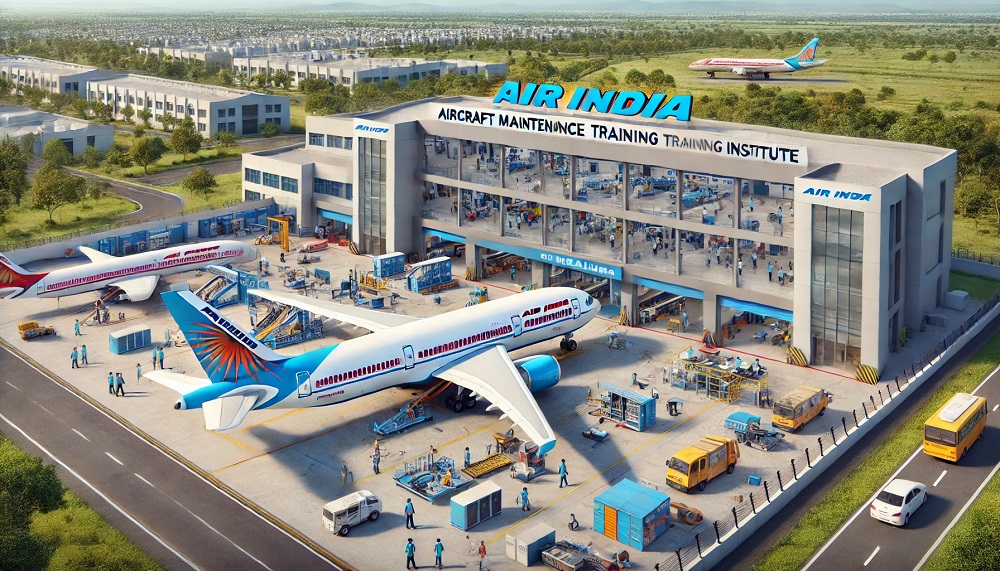
Air India, one of India’s leading global airlines, is set to establish a Basic Maintenance Training Organization (BMTO) in Bengaluru.
This institute will offer a comprehensive Aircraft Maintenance Engineering (AME) program certified by the Directorate General of Civil Aviation (DGCA). The program will follow an integrated 2+2 year structure, combining classroom learning with practical, hands-on training.
This initiative is part of Air India’s broader goal of creating a robust aviation ecosystem in India. With plans to expand its fleet and strengthen its operations, the airline aims to build a skilled workforce of maintenance engineers, making the organization self-reliant while supporting its ambitious transformation journey.
This country tops visa rejections in the popular Schengen countries
To bring this vision to life, air india has partnered with Bengaluru Airport City Limited (BACL), a subsidiary of Bangalore International Airport Limited (BIAL). Together, they will develop a state-of-the-art facility spanning 86,000 square feet at Bengaluru Airport City.
This purpose-built campus will feature modern classrooms, well-equipped laboratories, and qualified trainers to deliver world-class education and training. The institute is expected to become operational by mid-2026.
The BMTO will be located close to Air India’s new 12-bay Maintenance, Repair, and Overhaul (MRO) facility, also set to open in Bengaluru by early 2026. The AME program will begin with two years of academic coursework, followed by two years of practical training at the MRO, ensuring students receive hands-on experience adhering to industry standards.
Sanctions & Engine Issues Ground Half of Russia’s A320neo fleet
In the meantime, Air India has introduced a Cadet AME program in collaboration with reputable institutions in Bengaluru and Hyderabad.
This ensures continuity in its commitment to developing skilled aircraft maintenance engineers while the BMTO facility is under construction. The program also allows students to pursue a bachelor’s degree through university partnerships, enhancing their career and academic opportunities.
With this initiative, air india plane aims to address the growing demand for skilled professionals in aircraft maintenance and engineering, air india new planes contributing to the development of India’s aviation sector and creating specialized career paths for aspiring engineers.
-

 Aviation2 months ago
Aviation2 months agoMicrosoft Flight Simulator Raises $3 Million to Bring Back the An-225 Mriya
-

 Airlines2 months ago
Airlines2 months agoQatar Citizens Can Travel to the United States Without a Visa
-

 Aviation2 months ago
Aviation2 months agoQatar Airways bans these new Electronic Devices on plane
-

 Airlines2 months ago
Airlines2 months agoJapan Airlines Rolls Out Free Domestic Flights to International Passengers
-

 Defence2 months ago
Defence2 months agoWhich Country Has the Largest Fleet of Fighter Aircraft?
-

 Airport2 months ago
Airport2 months agoWestern Sydney Airport Welcomes Its First Plane After 6 Years of construction
-

 Travel2 months ago
Travel2 months agoQatar Airways Launches Four Additional Flights from Amsterdam
-

 Aviation2 months ago
Aviation2 months agoDid you know ? Once Boeing 747 carried 1088 passenger in 1991

